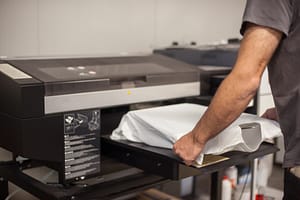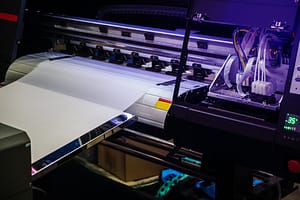Screen printing is a traditional printing technique that has been around for centuries. However, with the emergence of digital printing technologies like direct-to-garment (DTG) and direct-to-film (DTF), some are questioning whether screen printing is still relevant in the modern printing landscape. In this article, we will explore the advantages and disadvantages of screen printing, how it compares to DTG and DTF, and ultimately, whether it is still a viable option for printing today.
1. Introduction
When it comes to printing on garments, there are several techniques available to choose from. One of the most popular methods is screen printing, which involves applying ink through a stencil onto a garment. However, with the introduction of digital printing technologies like DTG and DTF, many are wondering if screen printing is still relevant. In this article, we will explore the pros and cons of screen printing and compare it to DTG and DTF to help you determine which method is right for you.
2. What is Screen Printing?
Screen printing, also known as silk screening, is a printing technique that uses a mesh stencil to transfer ink onto a substrate. The stencil is created by blocking out areas of the mesh with a light-sensitive emulsion, leaving only the areas where ink can pass through. The ink is then pushed through the stencil using a squeegee and onto the garment. Each color in the design requires a separate stencil and pass through the press.
3. Advantages of Screen Printing
One of the biggest advantages of screen printing is that it is very versatile and can be used on a variety of substrates, including textiles, paper, plastic, and metal. Screen printing is also very durable and can withstand repeated washings without fading or cracking. Additionally, screen printing allows for precise color matching and can produce bright, vivid colors that pop off the garment.
4. Disadvantages of Screen Printing
One of the biggest disadvantages of screen printing is that it can be costly for smaller print runs, as each color in the design requires a separate stencil and pass through the press. Additionally, screen printing is not very efficient for printing high-resolution images or small text, as the stencil can only be so fine. Finally, screen printing is not very environmentally friendly, as it requires the use of chemicals and solvents.
5. What is DTG Printing?

DTG printing is a digital printing technique that uses a specialized inkjet printer to apply ink directly onto a garment. Unlike screen printing, DTG printing does not require a separate stencil for each color, and can print high-resolution images and small text with ease.
6. Advantages of DTG Printing
One of the biggest advantages of DTG printing is that it is very efficient for printing small print runs or one-off designs. Additionally, DTG printing allows for the printing of high-resolution images and small text with ease. DTG printing is also very eco-friendly, as it does not require the use of chemicals or solvents.
7. Disadvantages of DTG Printing
One of the biggest disadvantages of DTG printing is that it is not as durable as screen printing. The ink used in DTG printing can fade or crack after repeated washings, particularly on darker fabrics. DTG printing is also not very cost-effective for larger print runs, as it is slower than screen printing and requires more ink per print.
8. What is DTF Printing?

DTF printing is a digital printing technique that uses a specialized printer to print a design onto a special transfer film. The transfer film is then applied to the garment using a heat press, which fuses the ink onto the fabric.
9. Advantages of DTF Printing
One of the biggest advantages of DTF printing is that it can be used on a variety of fabrics, including polyester, cotton, and blends. DTF printing also allows for precise color matching and can produce bright, vibrant colors. Additionally, DTF printing is very eco-friendly, as it does not require the use of chemicals or solvents.
10. Disadvantages of DTF Printing
One of the biggest disadvantages of DTF printing is that it is not as durable as screen printing. The ink used in DTF printing can crack or peel after repeated washings, particularly on darker fabrics. Additionally, DTF printing is not very cost-effective for larger print runs, as it requires a special transfer film for each print.
11. Comparing Screen Printing, DTG, and DTF
When it comes to choosing a printing method, there are several factors to consider, including cost, durability, and print quality. Here’s a quick comparison of screen printing, DTG, and DTF:
| Printing Method | Cost | Durability | Print Quality |
|---|---|---|---|
| Screen Printing | High (for smaller print runs) | Very Durable | Precise Color Matching, Vibrant Colors |
| DTG Printing | Low (for smaller print runs) | Less Durable | High-Resolution Images, Small Text |
| DTF Printing | Low (for smaller print runs) | Less Durable | Precise Color Matching, Vibrant Colors |
Ultimately, the best printing method for you will depend on your specific needs and budget.
12. Which Printing Method is Best for You?
When choosing a printing method, consider the following factors:
- The size of your print run
- The complexity of your design
- The type of fabric you’re printing on
- Your budget
For larger print runs or designs with only a few colors, screen printing is likely the best option. For smaller print runs or designs with lots of colors, DTG printing or DTF printing may be more cost-effective. If you’re printing on polyester or need precise color matching, DTF printing may be the best choice.
13. Conclusion
Screen printing, DTG printing, and DTF printing each have their own advantages and disadvantages. Screen printing is very durable and can produce vibrant colors, but can be costly for smaller print runs. DTG printing is cost-effective for small print runs and can print high-resolution images, but is less durable than screen printing. DTF printing is versatile and allows for precise color matching, but can be less durable than screen printing.
When choosing a printing method, consider your specific needs and budget. Each method has its own strengths and weaknesses, so it’s important to choose the one that best fits your needs.
14. FAQs
- Is screen printing still relevant in today’s digital age?
Yes, screen printing is still a popular and viable printing method for many businesses and industries.
- Can DTG printing be used on any type of fabric?
DTG printing works best on 100% cotton fabrics, but can also be used on blends with polyester or other synthetic fibers.
- Can DTG printing be used on any type of fabric?
DTG printing works best on 100% cotton fabrics, but can also be used on blends with polyester or other synthetic fibers.
- Is DTF printing eco-friendly?
Yes, DTF printing is a very eco-friendly printing method, as it does not require the use of chemicals or solvents.
- Is screen printing more expensive than DTG printing?
Screen printing can be more expensive for smaller print runs, as the setup costs are higher. However, for larger print runs, screen printing can be more cost-effective than DTG printing.
- Can DTF printing produce high-quality prints?
Yes, DTF printing can produce high-quality prints with precise color matching and vibrant colors.
15. Conclusion
In conclusion, screen printing, DTG printing, and DTF printing each have their own unique advantages and disadvantages. When choosing a printing method, it’s important to consider factors such as cost, durability, and print quality, as well as your specific needs and budget. With the information provided in this article, you should be better equipped to make an informed decision on which printing method is right for you.
